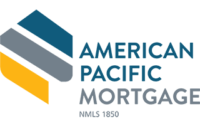Exploring FHA Loan Down Payment Assistance Programs
Given the rising prices of homes in 2018, the availability of down payment assistance programs is being researched more widely every day. More and more full-time working folks are pursuing every avenue possible to get into a home, and every purchasing edge is being considered. California is at the forefront of down payment assistance usage, especially as most urban areas are seeing home prices breaking well above a $325,000 medium home price. Yet, interestingly, two-thirds of home buyers in the state still are not aware that down payment assistance exists, particularly with FHA-assisted home buying. And many of the programs have no first-time homebuyer requirements.
What is a Down Payment Assistance Program?
At its most fundamental level, a down payment assistance program provides people the means to fund their home purchase down payment without having to use their own funds. This can be through a loan or a gift of funds. Either way, the money helps people meet their down payment requirement to make a home sale happen when personal funds are not enough or don’t exist.
How do Down Payments Work?
The first step is working through a mortgage lender who is certified to work with specific assistance programs. There are over 260 programs in California, but many lenders are not able to utilize them. As a result, it’s a key factor to find a lender who has access to these programs to take full advantage of them. Obviously, it’s not to a given lender’s advantage to tell people about other lenders who do have access, so some stay quiet about the program’s availability to avoid losing business. Others advertise their access heavily because it provides a market advantage. It’s up to the customer to find which lender can be a conduit.
The 501 (c) (3) Non-Profit Down Payment Assistance Program
There are few non-profit organizations that help with down-payment assistance directly, but they are not easily found. The fact is, most programs are government-funded and operated as a way to boost programs and reduce vacant, abandoned housing in impacted areas. One of the key programs to take a look at is the Housing Action Resource Trust, or HART. This non-profit uses charity to fund its efforts and utilizes the funds to help buyers with up to $15,000 per home in financial help. The funding is a gift and comes with no payback obligations whatsoever. Qualification requirements include needing to have already applied and be approved for an FHA loan and have at least 1 percent down-payment in cash ready to add in. The program is income need-based. There is a fee to participate, but the fee goes towards the cash down-payment requirement.
The State, County, and City Backed Down Payment Assistance Program
Most down payment assistance programs tend to be government programs at all levels of government, and they are frequently partnered with the Federal Housing Authority programs to increase homeownership in a given area. Cities, counties, states and special districts all participate and offer their own version of matching funds, additional help, or loans. In most cases, government assistance comes in two forms: a loan, or a grant (which is government-speak for a gift). In some rare cases it can also be provided as a tax benefit, but this is very uncommon. The key place to start for finding government assistance programs is your state housing financing agency website. Almost every government program that affects a person’s state will be listed. For example, California has the CHDAP program, which adds on a deferred-payment loan for down-payment assistance equal to 3 percent of a home’s purchase price (or valuation on appraisal). The funds can be used for either closing costs or the down payment.
Who Is Eligible for a Down Payment Assistance Program?
Those who want to take advantage of assistance programs for an FHA home or loan usually have to have some basic level of credit score to be eligible. This minimal credit score needs to be above 620 to guarantee participation will be approved. While some lower scores do go through, the chances drop dramatically below 620. The exact figures will vary from program to program, but very few provide any kind of assistance below 600. Keep in mind there can be other program requirements as well. For instance, many city programs are focused on specific groups of buyers, such as folks who are willing to work in the given city boundaries as a police officer, first responder, a teacher, or a science, technology or engineering role.
How Much Can I Borrow?
In most cases, the amount that can be borrowed if the down payment assistance is provided as a loan typically ranges from a low of $5,000 to a high of $20,000. Again, who offers the program dictates the funding level. Local city-level programs tend to be the smallest amounts while at the state level the funding can be much higher due to more resources available per case. In some extreme cases in California, due to the high level of local home prices, the funding could be as high as $100,000, but these situations are very rare.
Do I Need to Take my Credit Score Into Consideration?
Your credit status does matter and ideally, you have a decent credit history before engaging with programs for help. Generally, most FHA programs require that candidates have at least a 620 credit score and some as high as 640.
The FHA requires at least a 580 credit score to qualify for a *3.5 percent down payment and at least a 500 score to qualify with a *10 percent down payment.
*Example FHA: Loan amount $300,000, 3.5% down, monthly payment without taxes and insurance $1,501.74, APR 5.395%, FHA monthly MI is $211.00.
Are There Any Risks?
Depending on which opinion is referred to, some believe that assistance programs simply signal those applicants who are at a higher risk of defaulting on a mortgage if they don’t have the discipline to save for a down payment in the first place. This theory starts to capsize, however, when one looks at markets with runaway housing prices.
In reality, most of the risk associated with assistance programs is really on the providers of the assistance. They are the ones taking the real chance on supporting applicants who are not contributing the traditional cash down payment for a home purchase that mortgage lenders expect from an ideal buyer.
What Are the Cons of Down Payment Assistance Programs?
The real disadvantage of an assistance program may come in the obligations it puts on an approved applicant who accepts the assistance. For example, with FHA loans, the down payment required is lowered, which in effect is an assistance program requiring less cash up front. However, once engaged, the borrower has to pay mortgage insurance for the life of the loan.
Could Have Issues Selling
Some borrowers might find it a bit more difficult to sell their home when a down payment assistance loan is involved. Technically, using these programs creates a second loan on a home. To sell, the buyer has to resolve both loans on the home to clear title. That can get complicated, and not every secondary buyer may be interested in dealing with the hassles. That can make it take longer to sell an assisted home.
Second Mortgage Payment Issues
A second issue is that the second loan for assistance has a time limit before it comes due. If all the funds are being spent on the first loan, and no payments are made on the second, the borrower could get hit with a big payment suddenly due at the end of the loan life on the second program. This is rare but it can happen at the end of a 30-year loan situation with no payments registered and only interest paid.
Deed-Restricted Property
In other cases, a city-funded or assisted property may really end up being a deed-restricted property. This involves a home that can only be used in a certain function. The situation is most commonly seen in homeowner’s association neighborhoods with restrictions and covenants on home use, but cities can impose the same on properties they help buy.
What Are the Pros of Down Payment Assistance Programs?
Despite all the above, down payment assistance programs have some real value, and many buyers dive into these programs because they provide an avenue to get into a home that is otherwise not possible.
Make New Homes Affordable
Anything that helps reduce out-of-pocket costs make a home more affordable. And whether a program reduces the size of the down payment required or provides the funding to pay it, they all help a buyer meet the financial entry requirements that otherwise block a purchase outright.
Can Keep Your Monthly Payment Costs
The repayment of assistance can also be incorporated within monthly mortgage payments, avoiding an up-front payback challenge.
Take Advantage of Today’s Low-Interest Rates
Many of the FHA-partnered assistance programs offer seriously low-interest rates. Some even beat the current market rates by as much as one to two entire points. And that means real cash saved in avoided interest payments.
Helps Offset FHA Premiums and Mortgage Insurance
Some of the FHA purchase programs require an up-front premium or fee for mortgage insurance. With a down payment assistance program, these closing costs can be paid and offset entirely, removing them as a barrier to a sale completion.
You Gain Valuable Homeownership Education
Finally, any kind of research into assistance is definitely going to widen a person’s education about what is available for homebuyer assistance. The more inquiries one makes and the more programs one considers, the more collective knowledge one is going to gain about the overall home buying process leading to far better decisions.
How to Find Down Payment Assistance
For California, the first place to start is the California Housing Finance Authority at http://www.calhfa.ca.gov/. This agency is a portal to most of the major assistance programs listed under help for homebuyers. The program goes through an entire home buying education process and then helps potential buyers determine their eligibility. Then it helps buyers connect with programs and participating lenders who build the bridge to assistance available.
The views, articles, postings, and other information listed on this website are personal and do not necessarily represent the opinion or the position of American Pacific Mortgage Corporation or US Lending Company.
* For loan examples and more information visit our disclosure page at https://www.uslendingcompany.com/disclosures/





